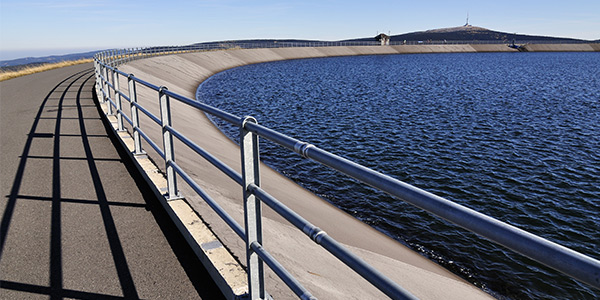The U.S. Department of Energy is encouraging long-duration energy storage (LDES) owners, those who purchase their services and state governments to rethink how those assets are valued.
LDES, defined as any resource that continuously operates for more than six hours, is all about mitigating risk, Max Tuttman, technology-to-market adviser at the department’s Advanced Research Projects Agency-Energy, said during a virtual “workshop” on energy storage hosted by DOE and several National Laboratories. “It’s the ultimate risk mitigation asset.”
Tuttman believes that LDES developers have to learn to adjust their thinking away from how their technologies provide value to the grid, to understanding how they can provide value to customers. LDES, for example, can bring value through “portfolio balancing” by acting like insurance, Tuttman said.
“Insurance is a product that you pay for that you hope to not use very much, and that you actually don’t expect to have a positive long-term return on,” he said. “Similarly, long-duration storage — if you have a portfolio of other assets, be those generators or load — can play an important role in managing the risk profile of that portfolio.”
Delivering that level of risk management creates value for different customer types, such as data center owners, renewable energy developers or load-serving entities.
“It’s important for technology developers to understand what the source of revenue is for those customers and then understand how long-duration storage can provide value to those customers in the context of their existing business models,” Tuttman said.
LDES also can provide value through asset substitution, he said.
The owner of a utility-scale solar project in California, for example, is using storage to flatten load and lessen transmission congestion, rather than pay for costly network upgrades. In this case, Tuttman said, the developer is replacing a transmission asset with a storage asset.
“You’re using [LDES] to offset the cost of a different asset,” he said. “So instead of keeping a power plant around for reliability, you now have energy storage for reliability.”
Policy Concerns
The way that policymakers and regulators currently value LDES creates barriers to market entry for the technology, Erin Childs, senior manager at Strategen Consulting, said during the workshop. In California, for example, rules for resource adequacy do not provide capacity credits for storage beyond four hours.
“Storage resources that are able to provide longer durations of dispatch really receive no benefits or no compensation for that,” she said. “There is a need to harmonize our capacity and our planning requirements with what we see the grid needing in the longer term.”
LDES companies that Strategen has worked with say they are cost-competitive at six- to eight-hour durations, Childs said. “The market just isn’t buying six to eight hours.”
There is a lot of opportunity for resource adequacy reform, according to Childs, but the process is long and complicated.
“If it takes us five years to do resource adequacy reform, are we willing to wait that long to do any long-duration storage? And if not, then what do we do as we’re getting our market incentives lined up?” she asked.
Childs said that policymakers also need to consider how electric systems will value and compensate much longer storage durations for reserves and reliability.
There is a misperception, she said, that 100-hour storage is just for those days of the year when the sun isn’t shining, the wind isn’t blowing or there are peak demands. Modeling of those longer durations, she argued, show that 100-hour resources charge throughout the year and dispatch 10 months out of the year.
“These are not resources that are put on the shelf … until something really terrible happens,” she said. “They are on the grid; they are dispatching; and there are revenue streams that they can be accessing.”



